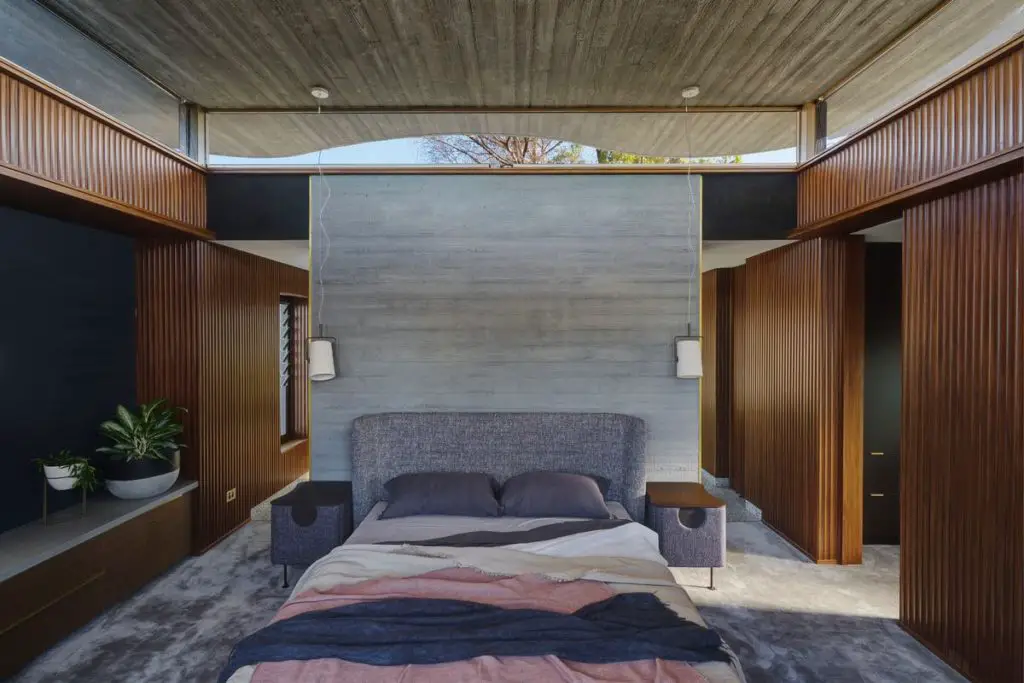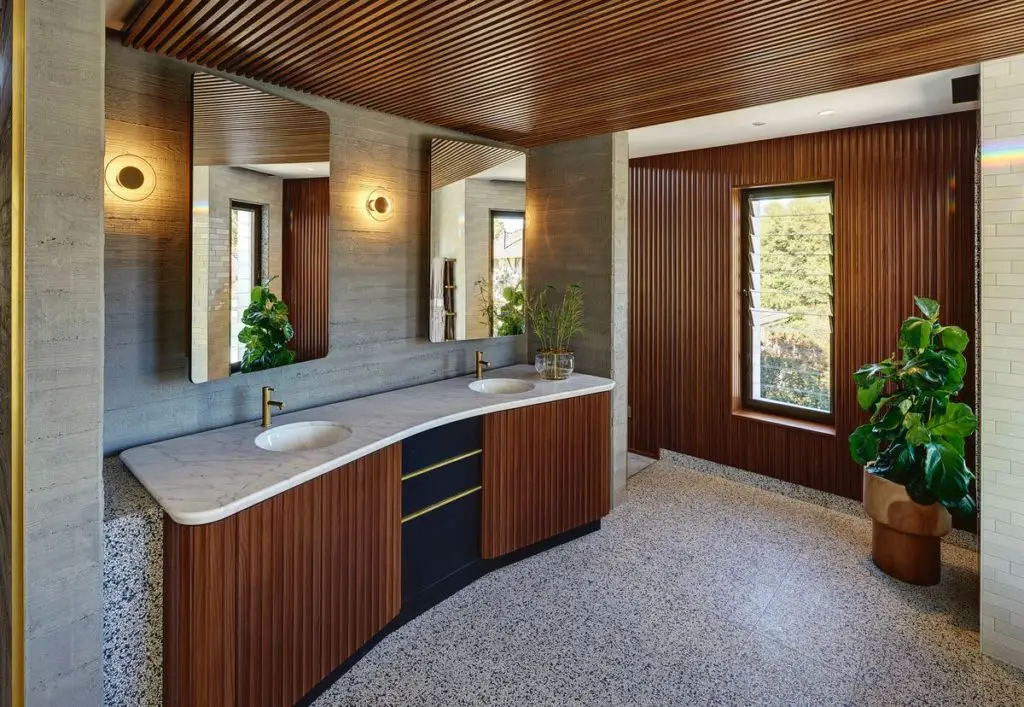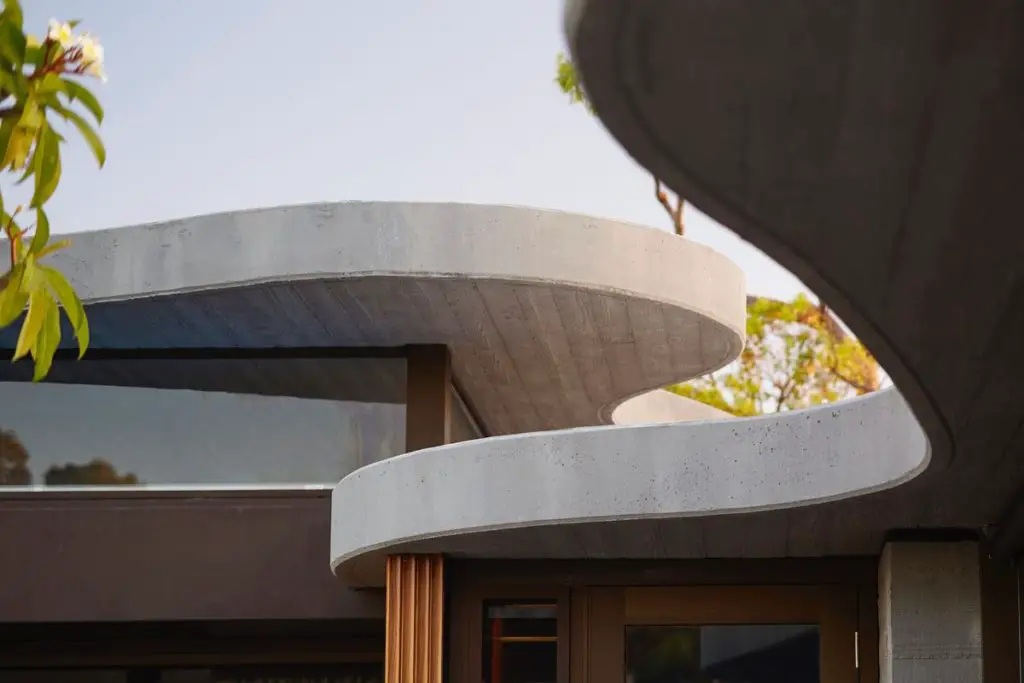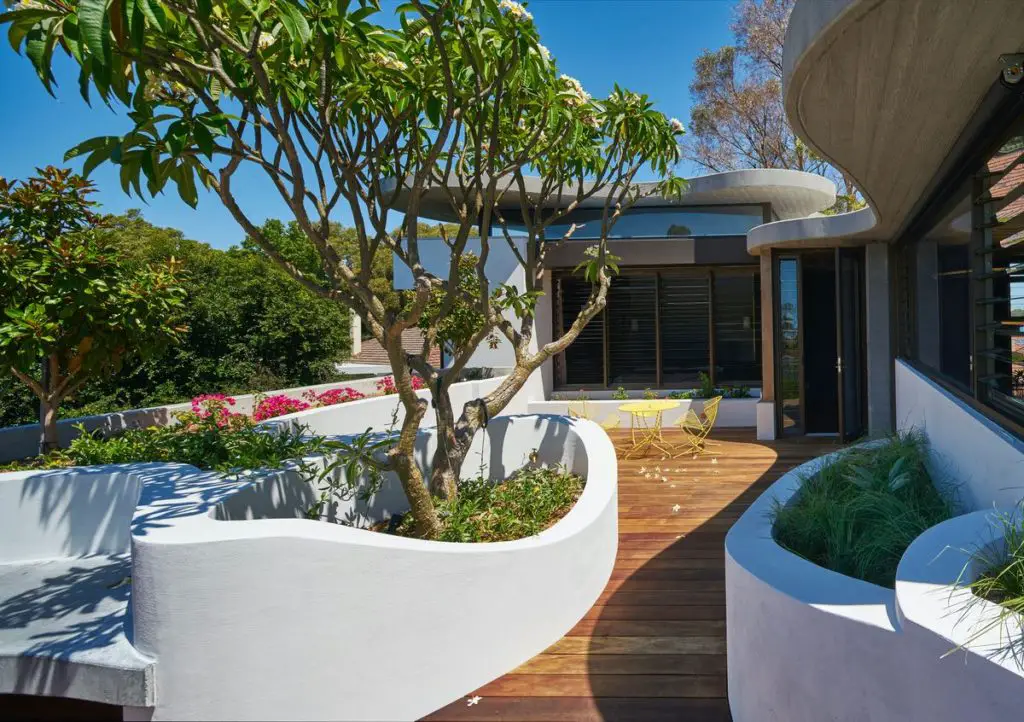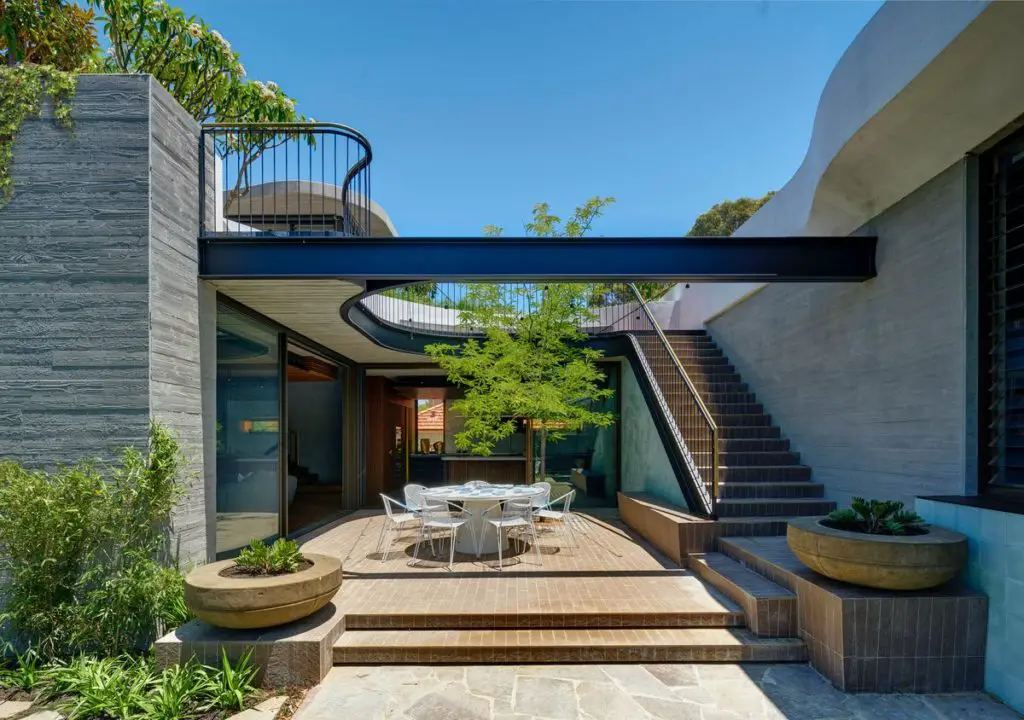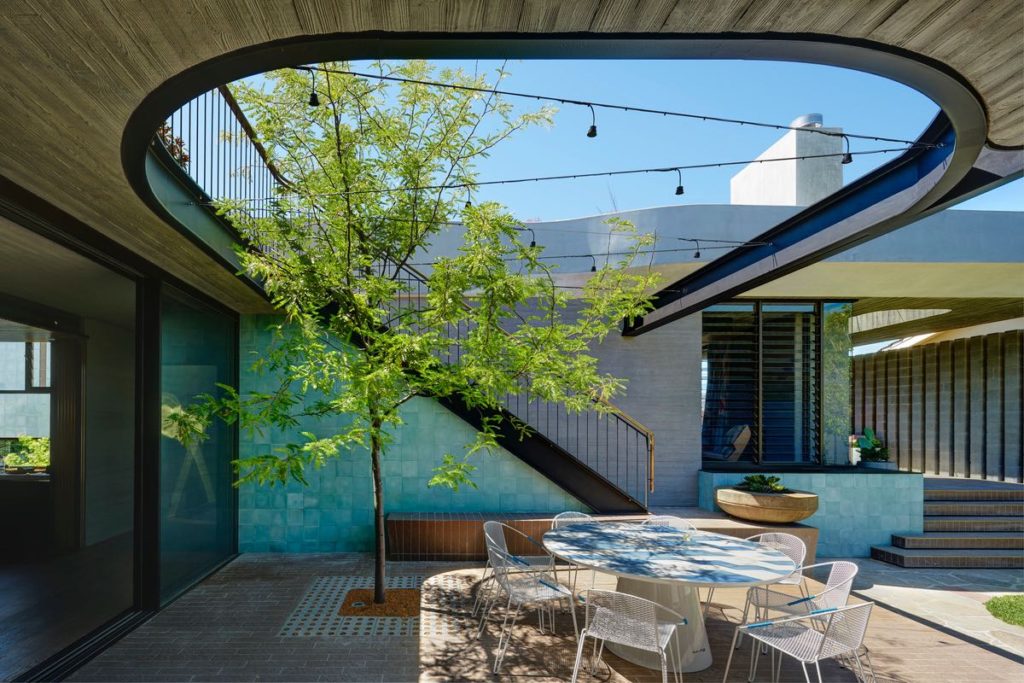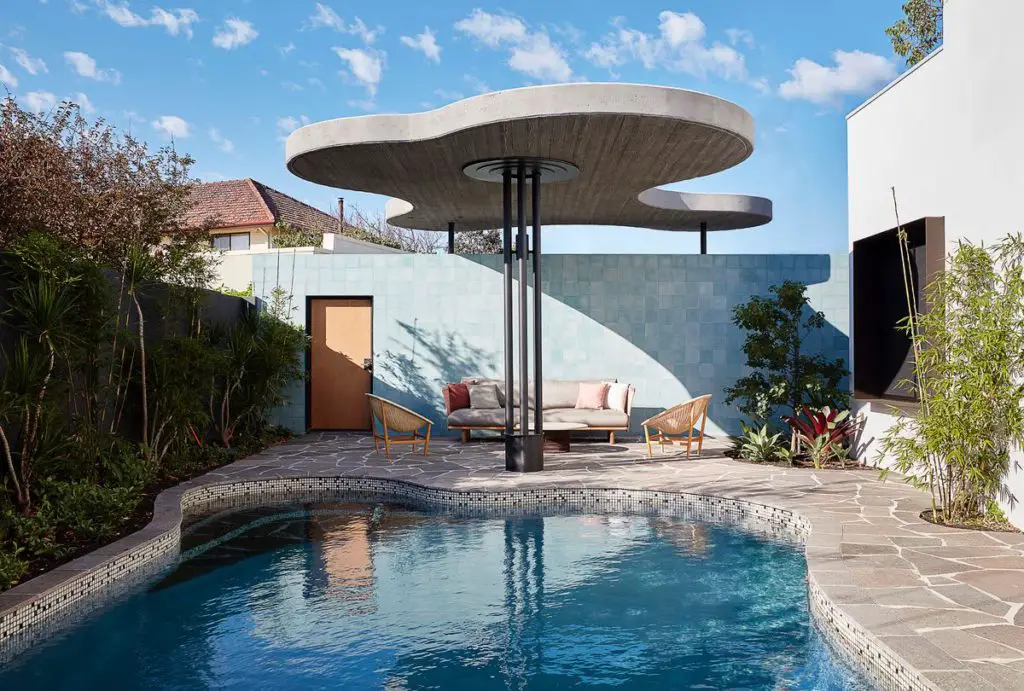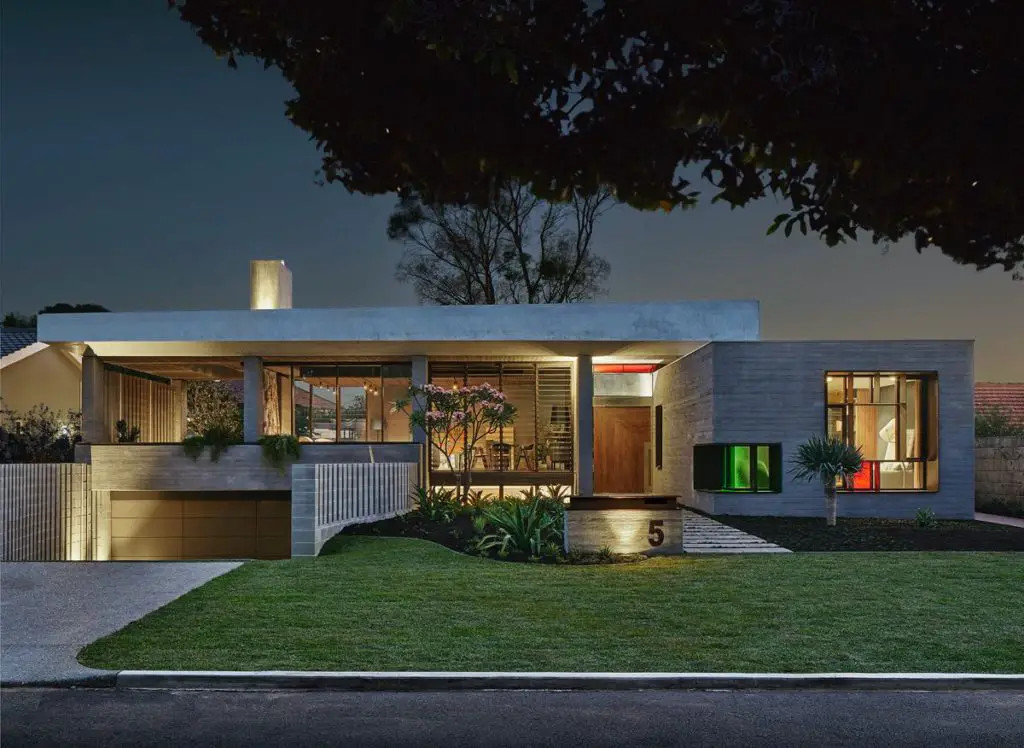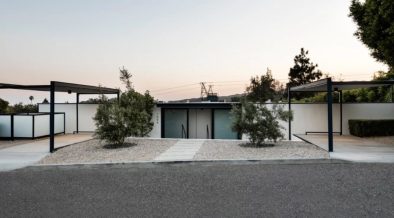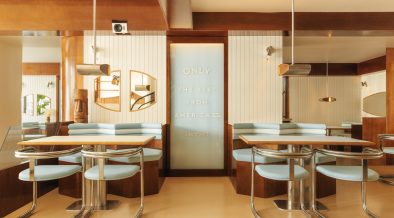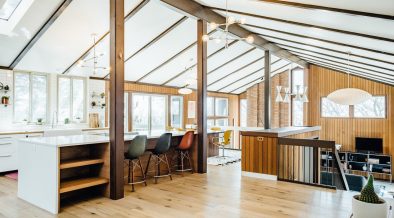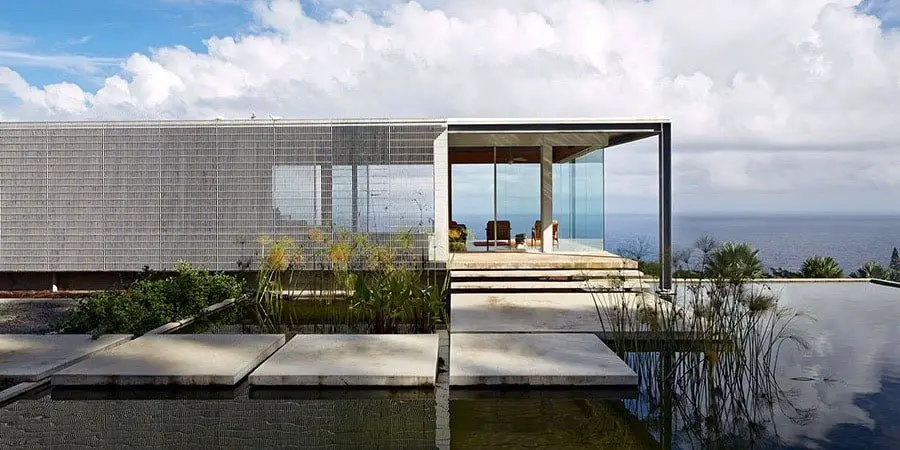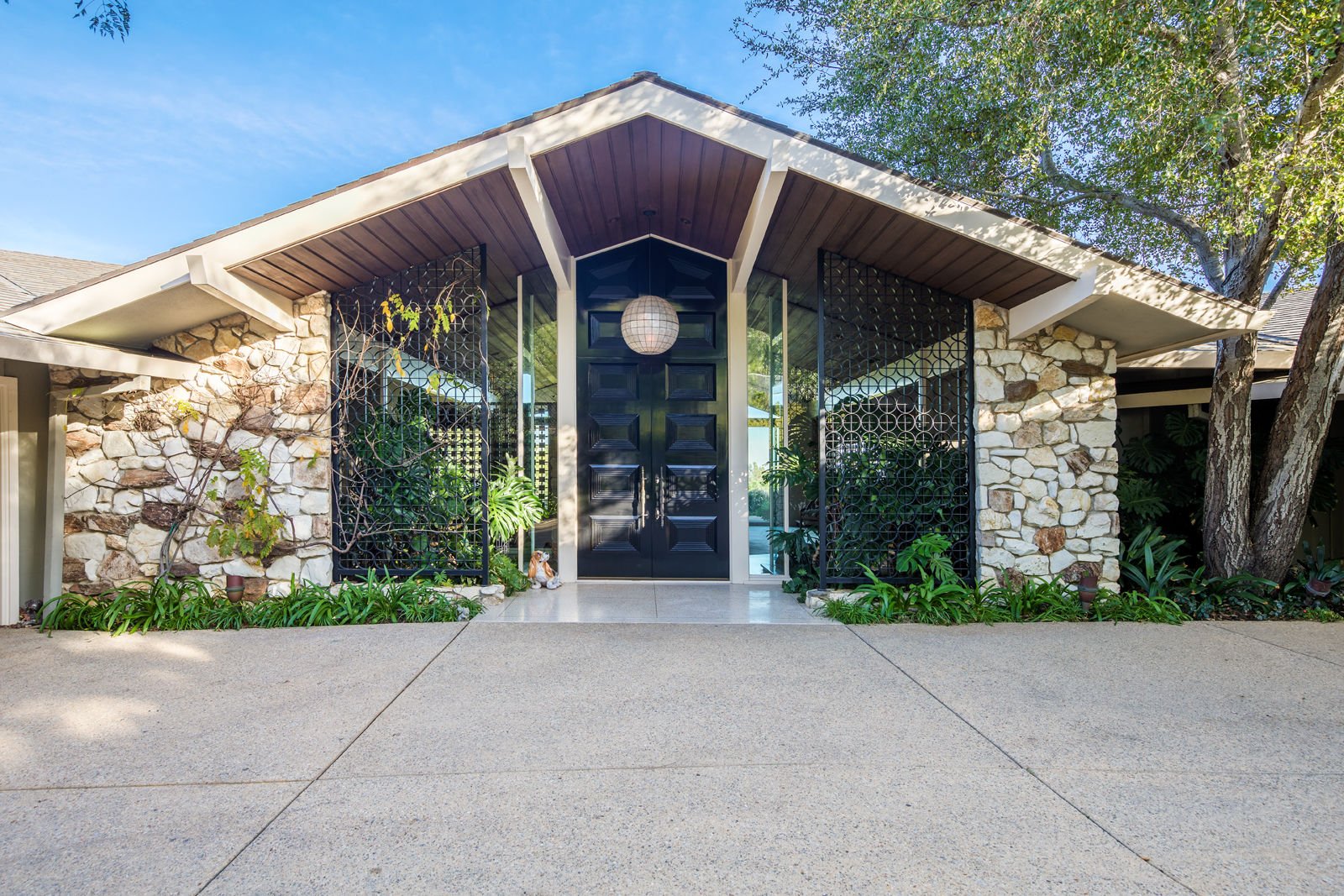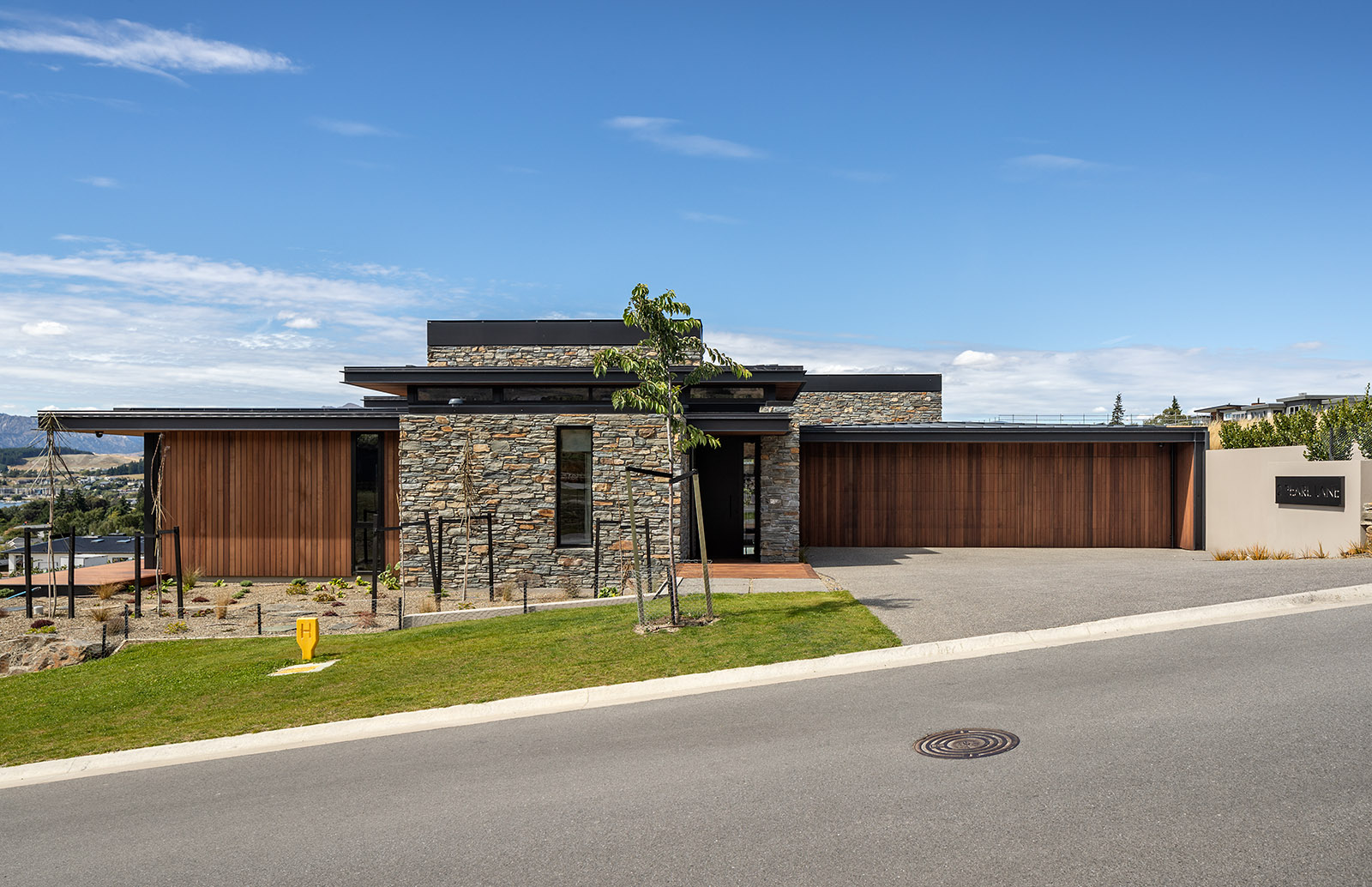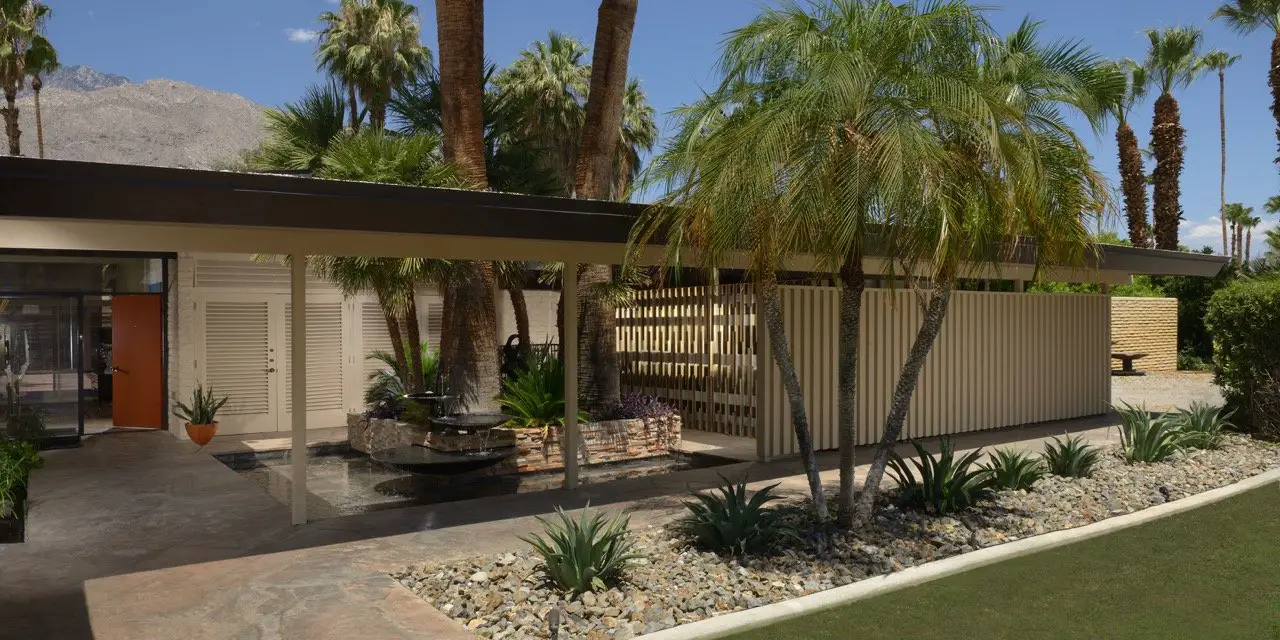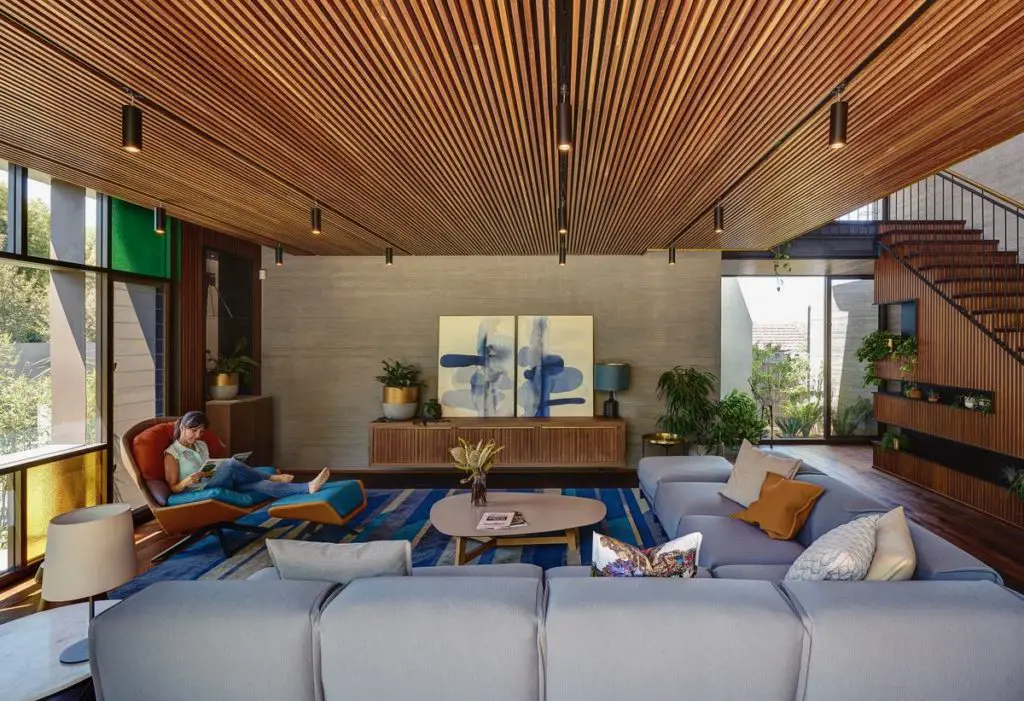
This iconic home is a tribute to the history of the Perth 1960’s ‘Garden Suburbs’ of Floreat and City Beach. The clients, who share a compassion for modernism and concrete, purchased a piece of land in Floreat and teamed up with Perth-based architect Neil Cownie to realize their dream home. Stretching over 549 square meters of floor area, The Roscommon House is an intricate architectural masterpiece that blurs the boundaries between inside and out.
The house is alive with layers, which reveal themselves when passing through the home’s various areas. A good deal of windows lighten the otherwise heavy cement facade, creating a connection between inside and out as well as inviting natural light to flood into the interior spaces. It can be said that the Roscommon House embodies the brutalist architectural style of Great Britain which emerged during the 1950s post-war era.
The original idea was to create a single storey home that would remain relevant for the clients over a long period of time through different stages of family life. The main building is single level; the first floor only accommodates the master bedroom. The bedroom opens to a beautiful wooden patio filled with greenery firmly planted in white cement containers.
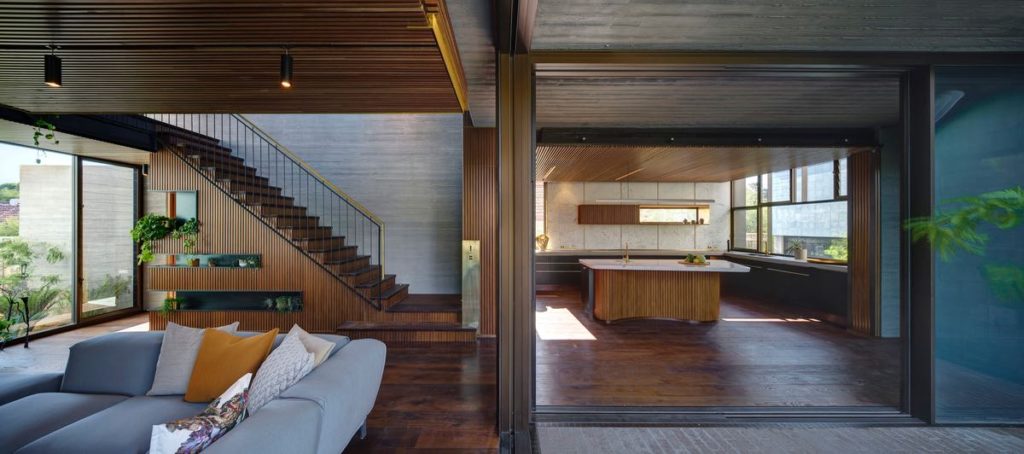
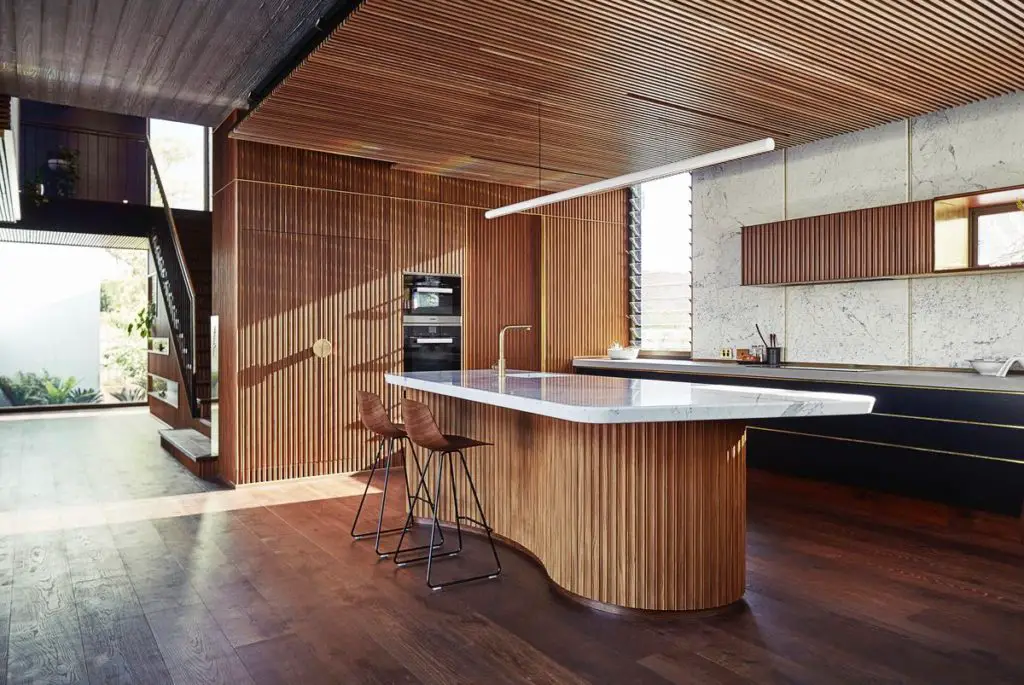
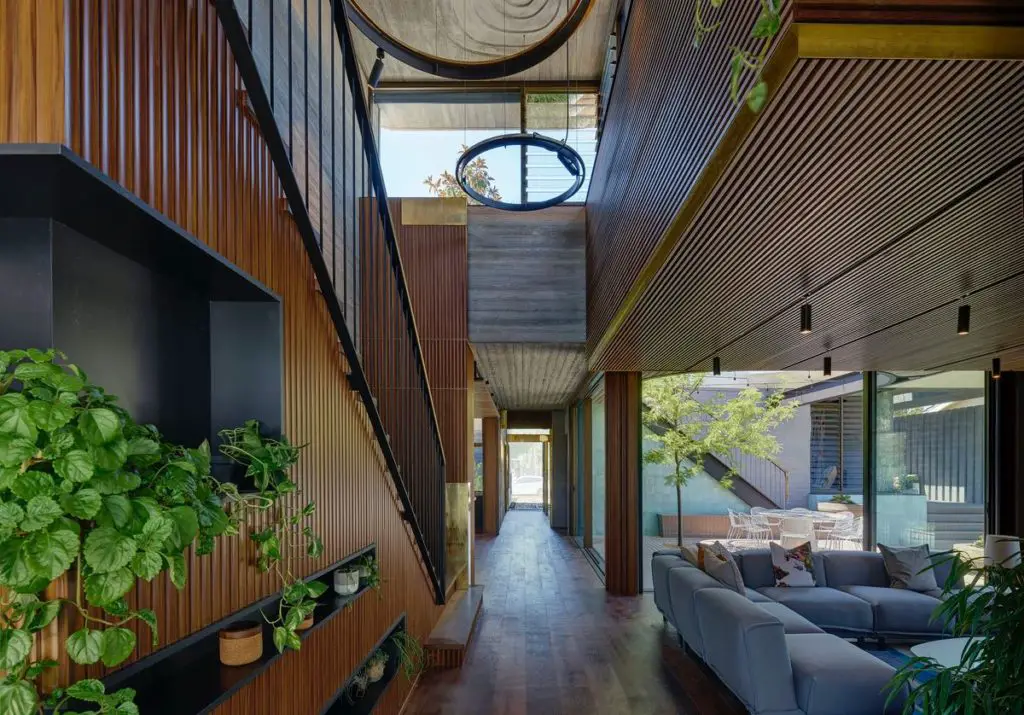
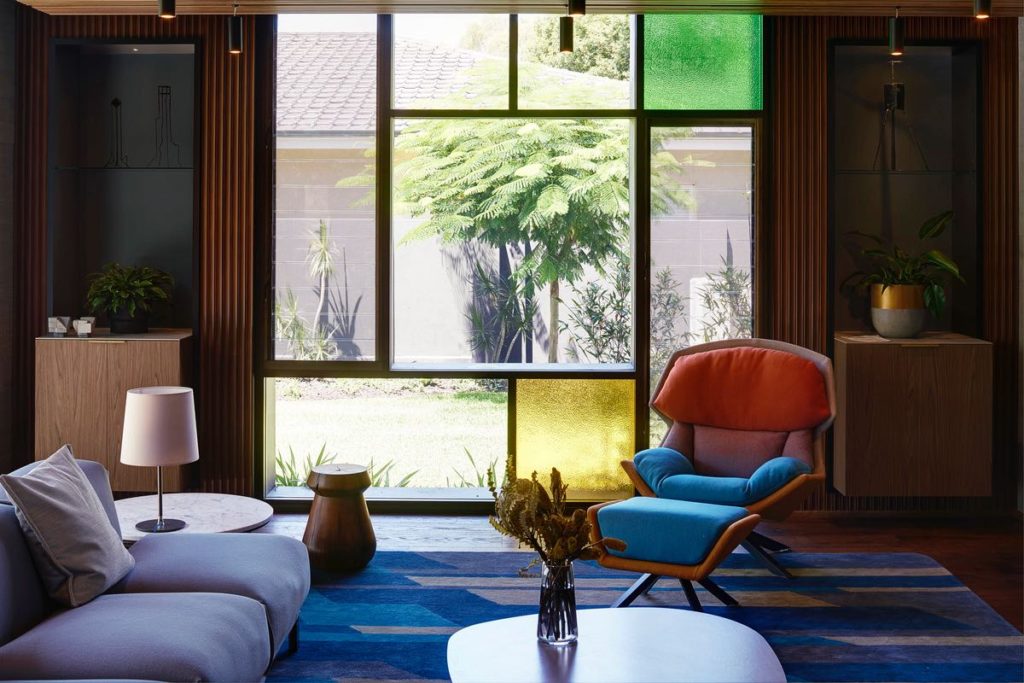
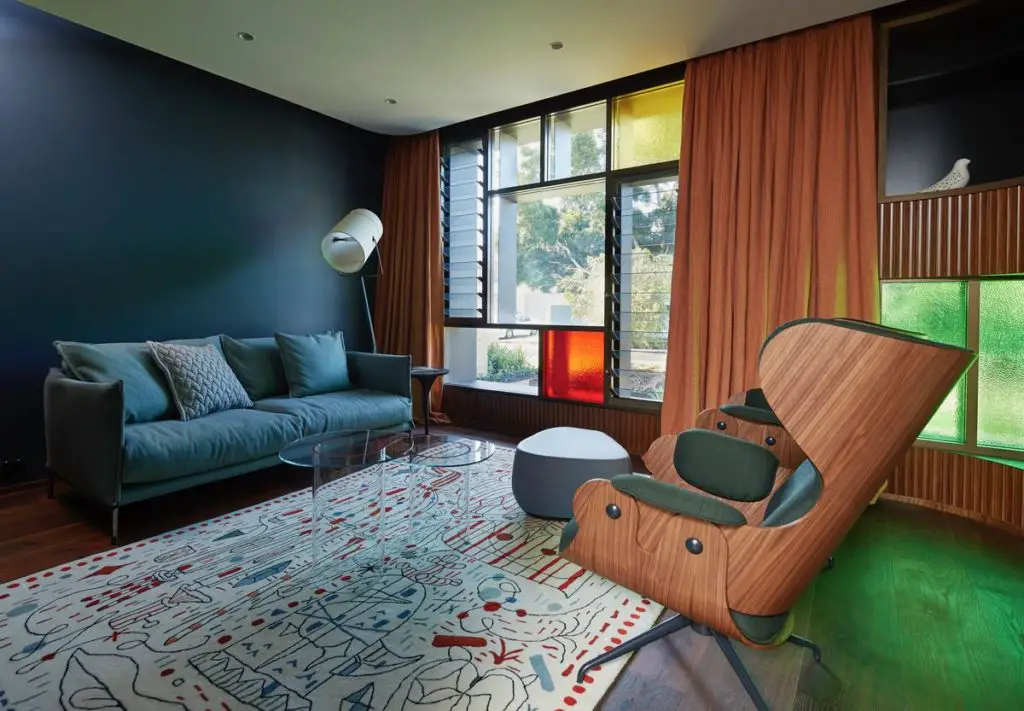
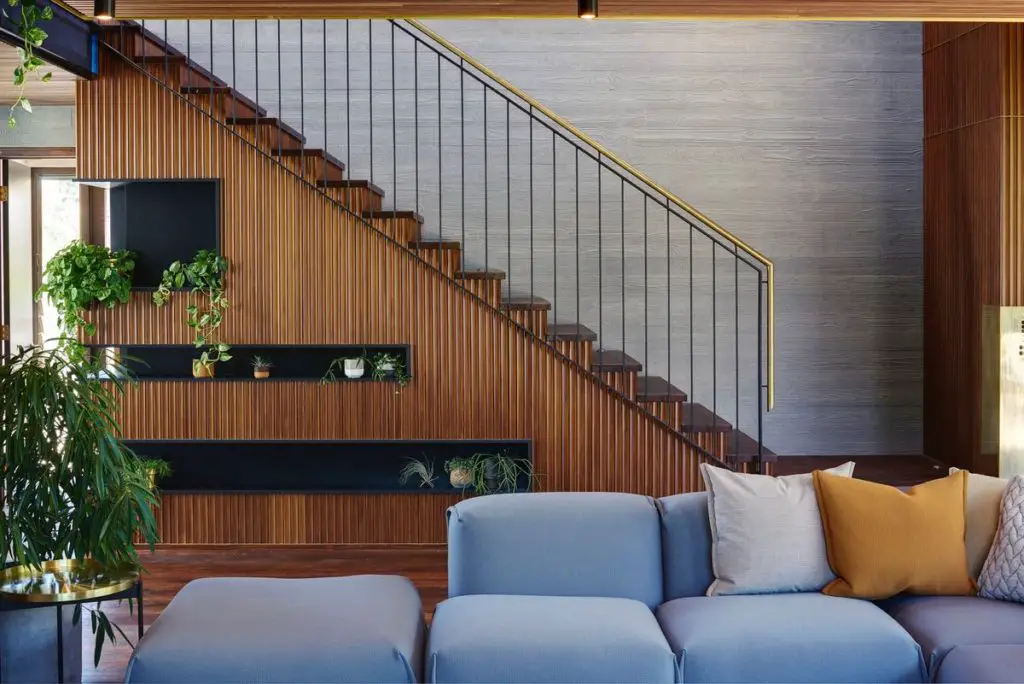
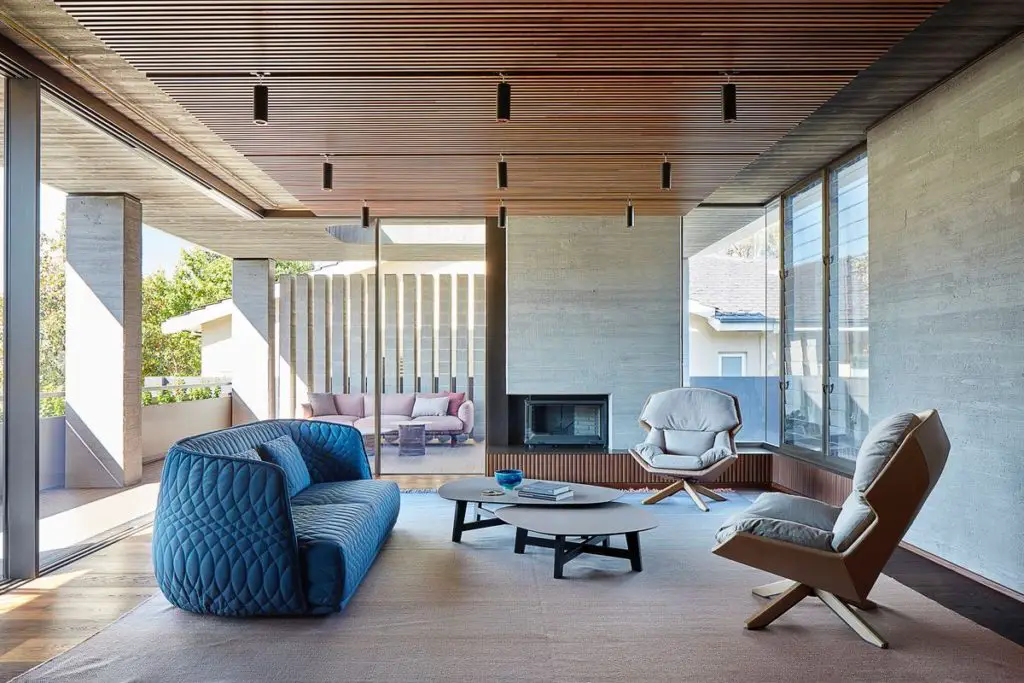
The bedroom garden is just one example of the several ‘pocket’ courtyards and roof terraces created by landscape architect PlanE Landscape Pty Ltd. More can be found by the pool area as well as in between the living room and outdoor staircase leading up to the second level. The roof carries a wavy beach style feel and it is no wonder – the inspiration for this roof comes from the City Beach as well as the Floreat Beach Kiosks.
“In my search for the unique attributes of the site for Roscommon House, I looked to the history of the suburb: its Town Planning, architecture, and ideals of the original subdivision for direction in creating a new house with a strong ‘sense of belonging’,” the architect explains.
In addition to cement, timber is used as a main material throughout the home. With the following, Neil Cownie explains the process: “through investigation, we sourced a suitable timber board and sandblasted the surface of the timber to expose the grain. This timber then formed the mould into which the liquid concrete was poured.
The end result is a wonderful textured timber grain finish to the concrete. The wonderful thing about working with concrete is the liquid nature of the poured concrete prior to it setting as a sort of ‘liquid stone’. This allows the moulds that hold the concrete to define the finished texture.”
